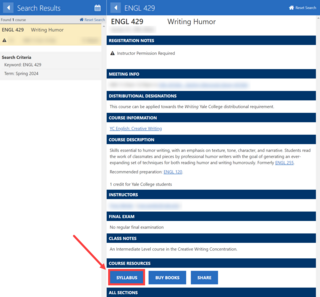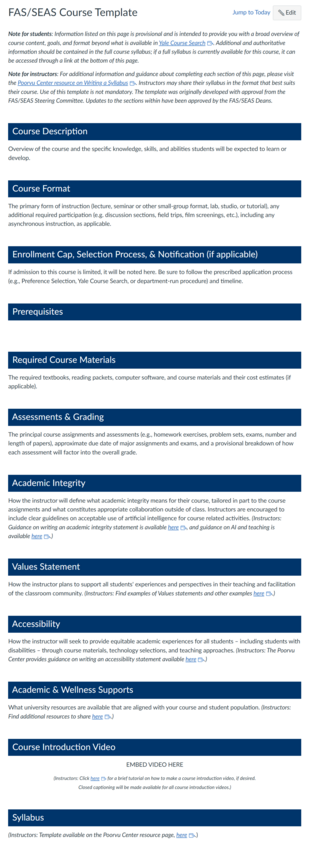The Expanded Course Description template was created for FAS/SEAS Canvas courses and was first implemented in fall 2020. This template was designed in partnership with the FAS Steering Committee and the Poorvu Center for Teaching and Learning.
The Expanded Course Description is built into the Syllabus tool in Canvas and is part of the course creation process.
Why is the Expanded Course Description in the Canvas Syllabus?
The expanded course description was added to the Syllabus tool in Canvas to facilitate student access to consistent information necessary during registration. Unlike other parts of a Canvas course site, the Canvas Syllabus is linked to its course listing on Yale Course Search once a faculty member publishes (or makes available) their official course site in Canvas. Students who are registering for classes can click the corresponding “Syllabus” button on Yale Course Search for a course to view the completed Expanded Course Description.


